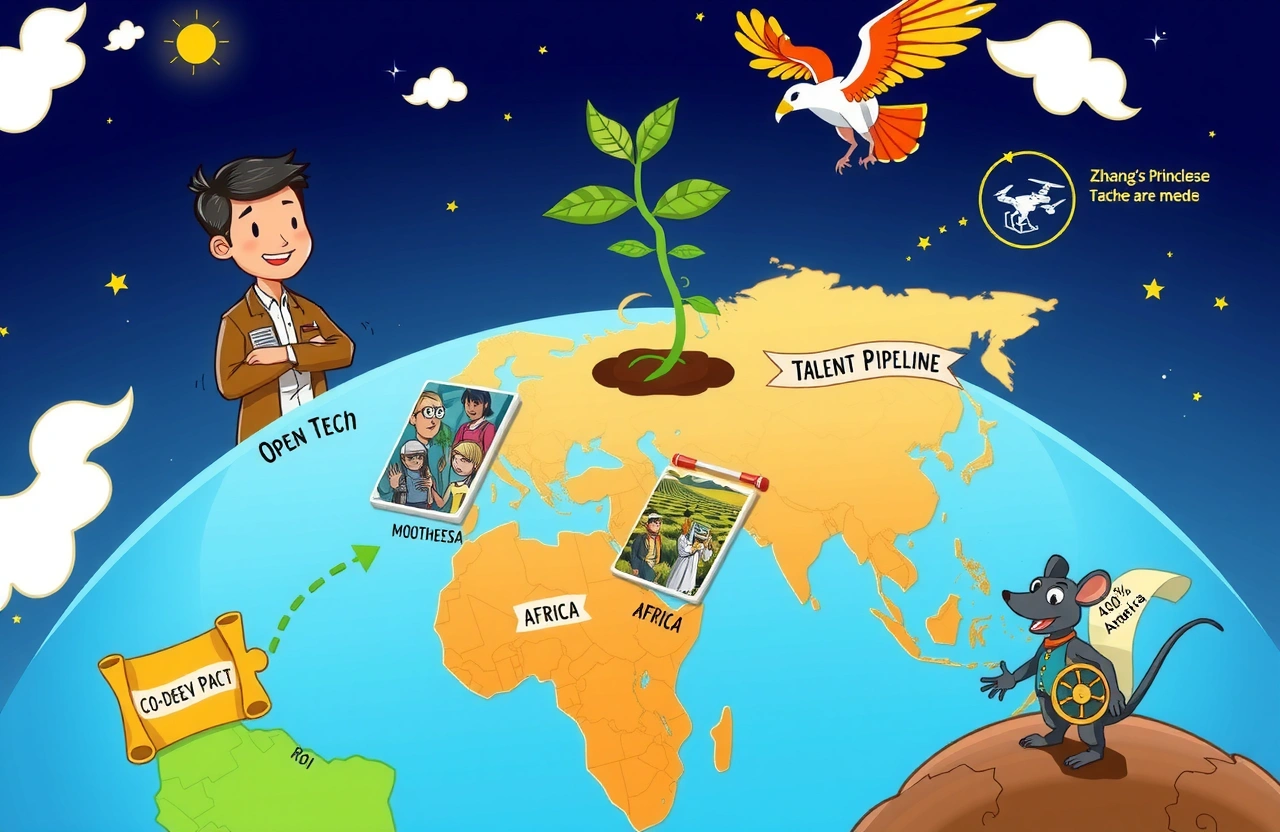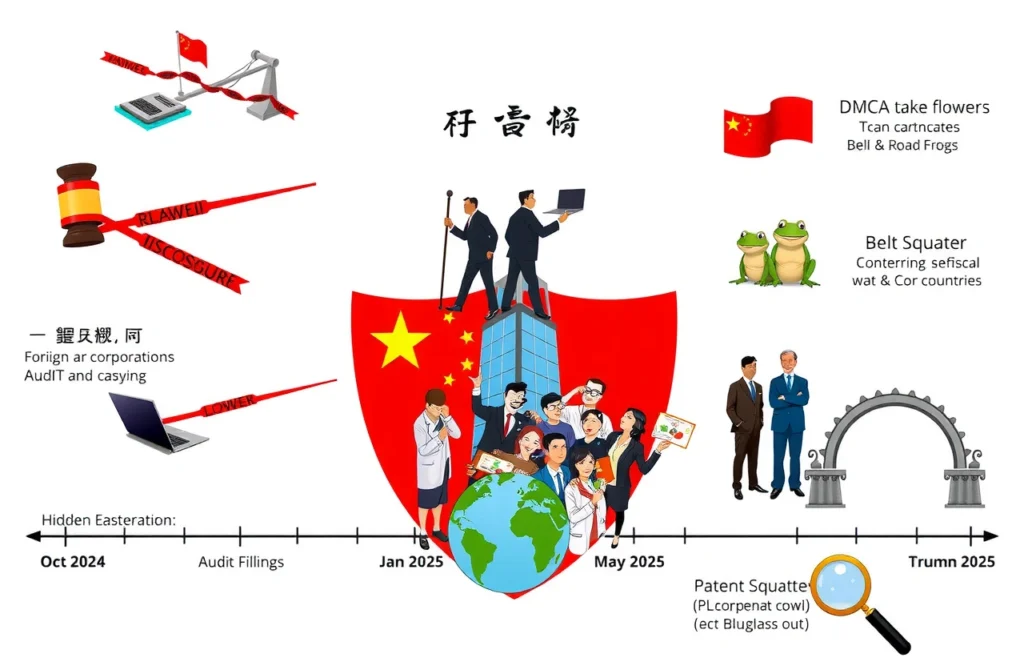The Global Talent Paradox
When BRICS Technology Transfer Center Director Zhang Zhang (张璋) addressed executives at Shenzhen’s 2025 China Enterprises Global Expansion Summit, he challenged conventional thinking about overseas operations. With China’s direct investment abroad exceeding $147 billion annually, companies face crippling talent shortages across emerging markets. Yet Zhang’s radical proposition cuts through conventional wisdom: by sharing technological advantages through open-sourcing tech and co-development, organizations naturally resolve workforce limitations.
Core Insights
- Technology sharing creates symbiotic talent ecosystems rather than extractive relationships
- The “teach to fish” philosophy builds local capacity while establishing market presence
- Co-development avoids backlash from technology monopolization practiced historically
- Long-term partnership models outperform transactional expansion approaches
- Talent solutions emerge organically when development benefits are equally distributed
The Competitive Advantage Paradox
When Protection Becomes Limitation
Multinationals traditionally guard intellectual property fiercely, considering trade secrets essential moats against competition. Zhang contends this mindset creates artificial ceilings overseas: “Excessive protectionism fundamentally diminishes potential market scale. True competitive advantage isn’t confined knowledge but continuous advancement capacity.” Data reinforces this view – enterprises allocating 20%+ R&D budgets to open-source collaboration report 34% faster talent acquisition abroad.
The Western Monopoly Trap
Historical models perfected by European and American corporations prioritized market domination through exclusion – aggressively patenting systems while limiting technology transfers. Developing economies increasingly resist such approaches. “Companies replicating these extractive methods face regulatory roadblocks and talent boycotts,” notes Zhang, highlighting cases where Vietnam halted manufacturing licenses over non-transfer agreements.
Co-Development Mechanisms
Technology Transfer Principles
Three operational pillars underpin successful open-sourcing tech and co-development engagement:
1. Modular knowledge release fitting local industrial maturity
2. Deep training pipelines through joint technical academies
3. Performance-tiered ownership frameworks
Example approaches include China-Africa satellite monitoring projects sharing agricultural technology expertise while building regional technical colleges.
The Talent Generation Cycle
When Indonesian telecommunications group Merah Putih partnered under co-development agreements, technical universities self-initiated curriculum aligned with partner technologies. “Educational institutions organically develop talent pipelines once they recognize mutual benefit pathways,” Zhang observes. Within 18 months, skilled applicant pools increased 400% locally for joint ventures.
Open-Sourcing Implementation
Strategic Technology Selection
Not all innovations should be shared universally. Effective frameworks distinguish:
– Market-entry helpful technologies (safe sharing)
– Evolutionary disruptive technologies (gradual collaboration)
– Core differentiation assets (protected)
Chinese solar panel manufacturers successfully deployed this matrix sharing intermediate production innovations freely while retaining proprietary cell tech secrets.
Infrastructure Investments
True co-development occurs through physical commitment: Uber Engineering Centers cultivating local programmers globally demonstrate superior talent retention versus pure remote offerings pursuing open-sourcing tech and co-development initiatives.
Regional Synergy Models
Emerging Economy Frameworks
Partnership formulas vary significantly:
– Southeast Asia: Focus on manufacturing tech + vocational education
– Africa: Renewable energy transfers + maintenance training
– Latin America: Agricultural processing systems + agronomy
Template standardization fails geographical uniqueness requiring thoughtful open-sourcing tech and co-development approaches.
The Win-Win Calculus
Talent Dividend Metrics
Companies documenting mutual growth cycles discover:
– 21% average local management promotion rates
– 18 months faster workforce scaling
– 300% ROI improvement compared to pure hiring approaches
Sustainability metrics compound benefits – eco-initiatives created through energy-sharing technologies produced 27% stronger talent attraction.
Renewed Competitive Advantages
Collaboration creates defensible strengths where patents cannot: Zimbabwean renewable cooperatives developed specialized wind turbine modifications unsuitable elsewhere, creating export niches unavailable without location-specific knowledge.
Overcoming Implementation Risks
Cultural Integration Protocols
Effective co-development navigates:
– Hierarchical communication differences
– Technology adoption cycles
– Training literacy requirements
Thailand-based manufacturing transitions accelerated through bilingual supervisors mediating engineering teams.
Ownership Control Systems
Phased technology transfer milestones with verification metrics maintain mutual accountability while preventing knowledge seizure risks. Kenya’s utility partnerships established clear infrastructure handover triggers after local technician certification.
The Cooperative Imperative
Skepticism toward open-sourcing tech and co-development misunderstands modern globalization’s fundamentals: mutually rising tides lift all fleets. “Winning through exclusion represents twentieth-century thinking,” Zhang insists. Countries now demand equitable partnerships – enterprises embracing this reality naturally access vibrant talent pools pursuing shared advancement objectives.
Call to Action
Begin transformation immediately: identify one department implementing co-development demonstration projects measuring talent ecosystem growth quarterly. Monitor emerging competitors – organizations applying Zhang Zhang’s principles exhibit terrifying expansion velocity. The technological advantage gap narrows daily; lead through generosity or follow through dependency.




